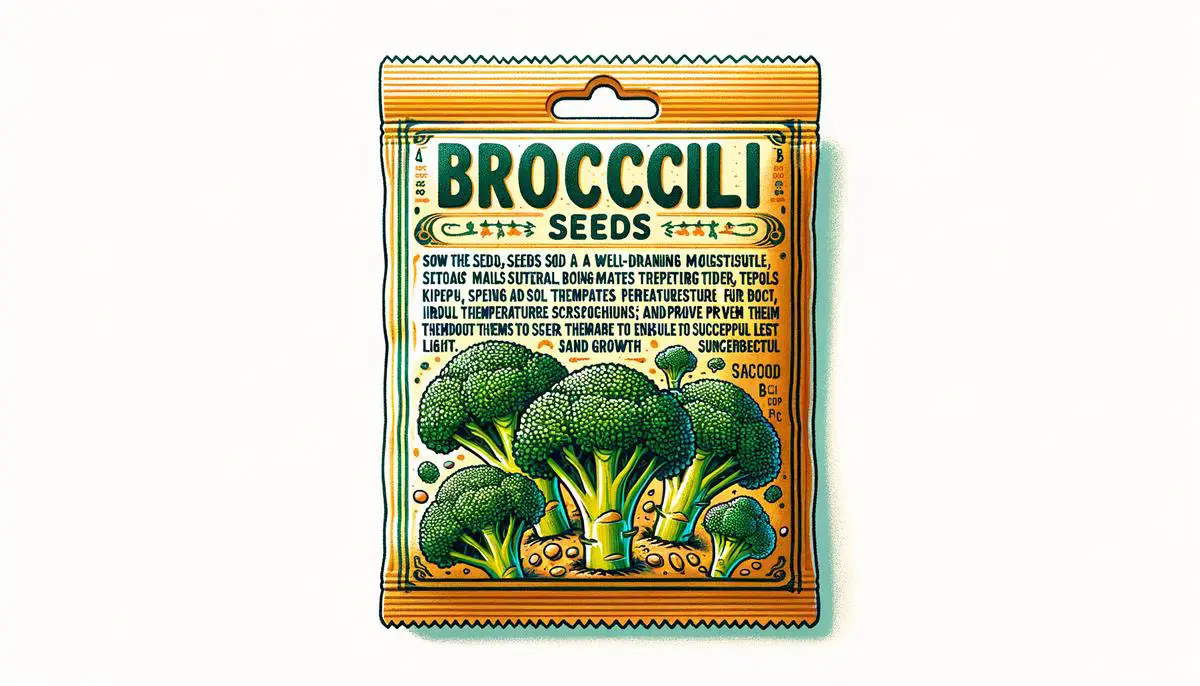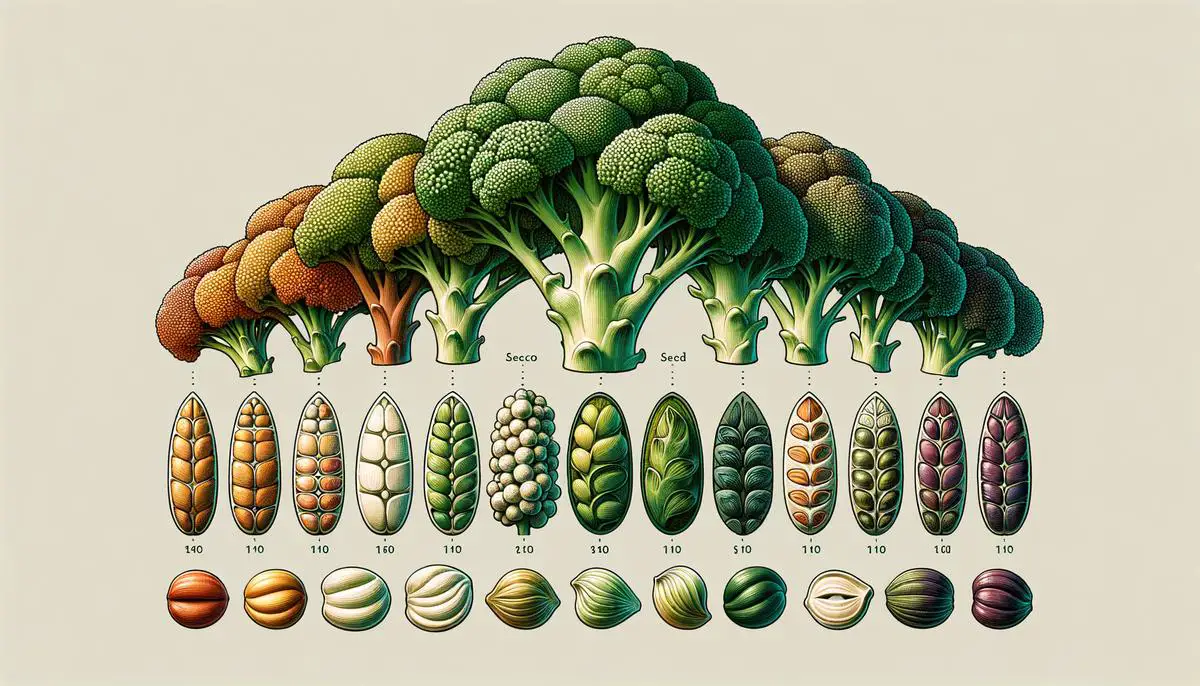Embarking on the journey of growing your own broccoli might not carry the allure of dining in a Michelin-starred restaurant, but it does present its own form of satisfaction and excitement. Similar to selecting a restaurant based on its unique offerings and promise of a culinary adventure, choosing the right broccoli seed variant sets the tone for your gardening experience. It’s about tuning into the rhythm of nature, understanding the climate dance, and anticipating the taste of success. Like crafting a meal from scratch, where every ingredient is carefully considered, creating the ideal environment for your seeds to germinate is no less an art form. This adventure, as with most, begins with a single, small step – selecting that perfect seed.
Selecting the Right Broccoli Seed Variety
Choosing the Best Broccoli Variety for Your Garden
Reader Poll: What online courses would interest you?
Selecting the right broccoli variety for your garden boils down to understanding your local climate, the specific growing season, and your taste preferences. Here’s how to ensure you pick the best one for a bountiful, tasty harvest.
- Understand Your Climate: Broccoli thrives in cool weather, but not all varieties are created equal. Some excel in colder conditions, while others are more tolerant of warmth. If you live in an area with hot summers, look for heat-tolerant varieties like ‘Green Magic’ or ‘Arcadia’. In cooler regions, almost any broccoli variety will do, but ‘Calabrese’ and ‘Waltham 29’ are renowned for their cold-hardiness.
- Consider the Growing Season: Timing is everything. If you want broccoli in both spring and fall, you’ll need to select varieties based on maturity time. Early-season varieties like ‘De Cicco’ mature quickly, offering a speedy harvest, whereas ‘Marathon’ or ‘Belstar’ are mid-season types with a longer growing period. For a late-season harvest, ‘Purple Sprouting’ is an excellent choice, braving cooler temperatures for a winter bounty.
- Decide on Desired Characteristics: Are you looking for large heads, or is your heart set on more tender, bite-sized florets? For sizable, show-stopping heads, ‘Imperial’ or ‘Diplomat’ should be on your list. If you’re leaning towards something unique, consider ‘Romanesco’ for its intricate, geometric pattern and nutty flavor.
- Space Considerations: Smaller gardens or container gardens require compact varieties. ‘Small Miracle’ and ‘Bonanza’ are space-efficient options that don’t compromise on size or flavor of the broccoli heads they produce.
- Taste and Nutritional Value: While all broccoli is nutritious, some varieties are touted for superior health benefits or flavor. ‘Destiny’ is celebrated for its high vitamin content, while the heirloom ‘Purple Sprouting’ offers a unique taste and additional anthocyanins due to its purple hue.
- Pest Resistance: Broccoli can be susceptible to pests like aphids and cabbage worms. Some varieties, however, are bred for resistance. ‘Arcadia’ is noted for its toughness in the face of common broccoli pests, potentially saving you from extra rounds of pest control.
- Availability: Finally, ensure the seeds or seedlings you want are available in your area or from a reliable online source. Rare or heirloom varieties might require a bit more searching, but the effort pays off in the uniqueness and flavor of your harvest.
By considering these seven points, you’ll be well on your way to choosing the best broccoli variety for your garden. Remember, gardening is part experiment, part labor of love. Don’t shy away from trying multiple varieties to discover what works best in your garden’s microclimate. Happy gardening!

Creating the Ideal Seed Starting Environment
Moving forward in our exploration of creating the ideal conditions for germinating broccoli seeds, it’s crucial to delve into the specifics that can make or break your gardening success. Broccoli, a cool-season crop, demands your attention in several key areas to ensure that your seedlings thrive and eventually mature into a bountiful harvest. Let’s unpack these essentials without further ado.
Subscribe to our newsletter!
Firstly, soil preparation cannot be overstressed. Broccoli thrives in a well-draining soil with a pH between 6.0 and 7.0. Before planting, enrich your soil with compost or well-rotted manure to boost its nutrient content. This step is pivotal because broccoli is a heavy feeder, requiring a robust foundation of nutrients to support its growth.
Water management is another critical factor. After planting your seeds, maintain a consistent moisture level in the soil but be careful not to overwater. The goal is to keep the soil moist but not soggy, as standing water can lead to seed rot. Investing in a soil moisture meter might be prudent for those who find it challenging to strike the right balance.
Temperature plays a significant role in the successful germination of broccoli seeds. They germinate best at temperatures between 65°F and 75°F (18°C and 24°C). If you’re starting seeds indoors, a heat mat can help maintain this ideal temperature range. When sowing directly outdoors, timing is everything—aim for early spring or late summer, depending on your area’s climate, to align with cooler temperatures that broccoli seeds favor.
Light is equally important once seeds have sprouted. Seedlings require at least 6 to 8 hours of direct sunlight daily. If growing indoors, this might necessitate supplemental lighting. Placing seedlings by a sunny window or using grow lights can ensure they receive the adequate light levels needed for vigorous growth.
Lastly, patience and observation are your allies in this process. Monitor your seeds daily for signs of germination and address any issues promptly. Thin out seedlings if they appear overcrowded to prevent competition for resources. This attentiveness in the early stages sets the foundation for healthy, productive plants.
By focusing on these crucial aspects—soil, water, temperature, and light—you equip your broccoli seeds with the resources they need to germinate successfully and ultimately grow into the flourishing plants you aspire to cultivate. Happy gardening!

Transplanting Seedlings
Moving forward in cultivating your broccoli brigade, it’s imperative to orchestrate their grand garden entry with precision and care. Broccoli, being a somewhat finicky character in the garden drama, demands a properly timed and executed debut to ensure a star performance.
Hardening Off:
Before your broccoli seedlings can grace the garden stage, they must undergo a process known as “hardening off.” This critical practice involves gradually acquainting your tender seedlings to the harsher outdoor conditions. Begin about a week before the intended transplant date. Place them outside in a sheltered, partially shaded spot for a few hours each day, progressively increasing their exposure to sunlight and outdoor temperatures. This step tempers their delicate constitutions, prepping them for the trials of outdoor living.
Select the Date:
Timing isn’t just everything; it’s the only thing when it comes to transplanting broccoli. These green performers have no love for the limelight of summer’s scorching heat. They seek the milder climes of early spring or late summer. For spring plantings, two to three weeks before the last expected frost date is your cue. For a fall harvest, reverse the math, planting about two to three months before the first expected frost. Broccoli thrives in temperatures between 65°F and 75°F, making those cool periods their time to shine.
Stage Preparation:
Choose a day that’s cloudy or at least ensure the sun isn’t at its peak. Your garden plot should offer them a space where they can bask in full sunlight – at least six hours a day. Remember, despite their preference for cooler weather, these verdant actors still crave their moment in the sun.
Transplanting Performance:
Dig a hole for each seedling, making it just deep enough to comfortably nestle the root ball, spaced about 18 inches apart to give each plant room to spread its leafy wings. Mix a scoop of compost into the hole to sweeten the pot, then place your seedling gently inside. Backfill with soil, pressing down lightly to secure it without compacting the earth. Offer each newly planted seedling a generous gulp of water to ease the shock of transplantation. This initial watering is like the opening act, setting the tone for the growth to come.
Aftershow Care:
Post-debut, your broccoli plants will require steady moisture, so aim for about 1 to 1.5 inches of water weekly, especially if rainfall is lacking. Mulching around the plants can keep the soil moist and cool, also deterring weeds that vie for nutrients and water. As your broccoli plants grow, be vigilant against pests and diseases that could hamper their performance.
In the unfolding weeks, your careful preparation and attentive care will lead to a flourishing garden. Broccoli heads will form like green crowns, heralding your success. Remember, the culmination of your effort is not just in the harvest but in the journey from seedling to splendid greens. Your patience and diligence backstage are what make the garden’s production a resounding success.

As our exploration in the garden draws to a close, remember, the journey doesn’t end with transplanting those tender seedlings into the vast expanse of your garden bed. It’s a continuous cycle of learning, observing, and nurturing – much like the care a chef takes in preparing a dish, ensuring each element is just right. Your commitment to understanding the needs of your broccoli plants, adjusting as necessary, and marveling at their growth mirrors the dedication found in the finest kitchens. The garden, like the kitchen, is a place of endless possibility and the harvest, a testament to the care and thought invested from the very beginning. Here’s to the bountiful meals and moments of joy your garden will bring to your table.

